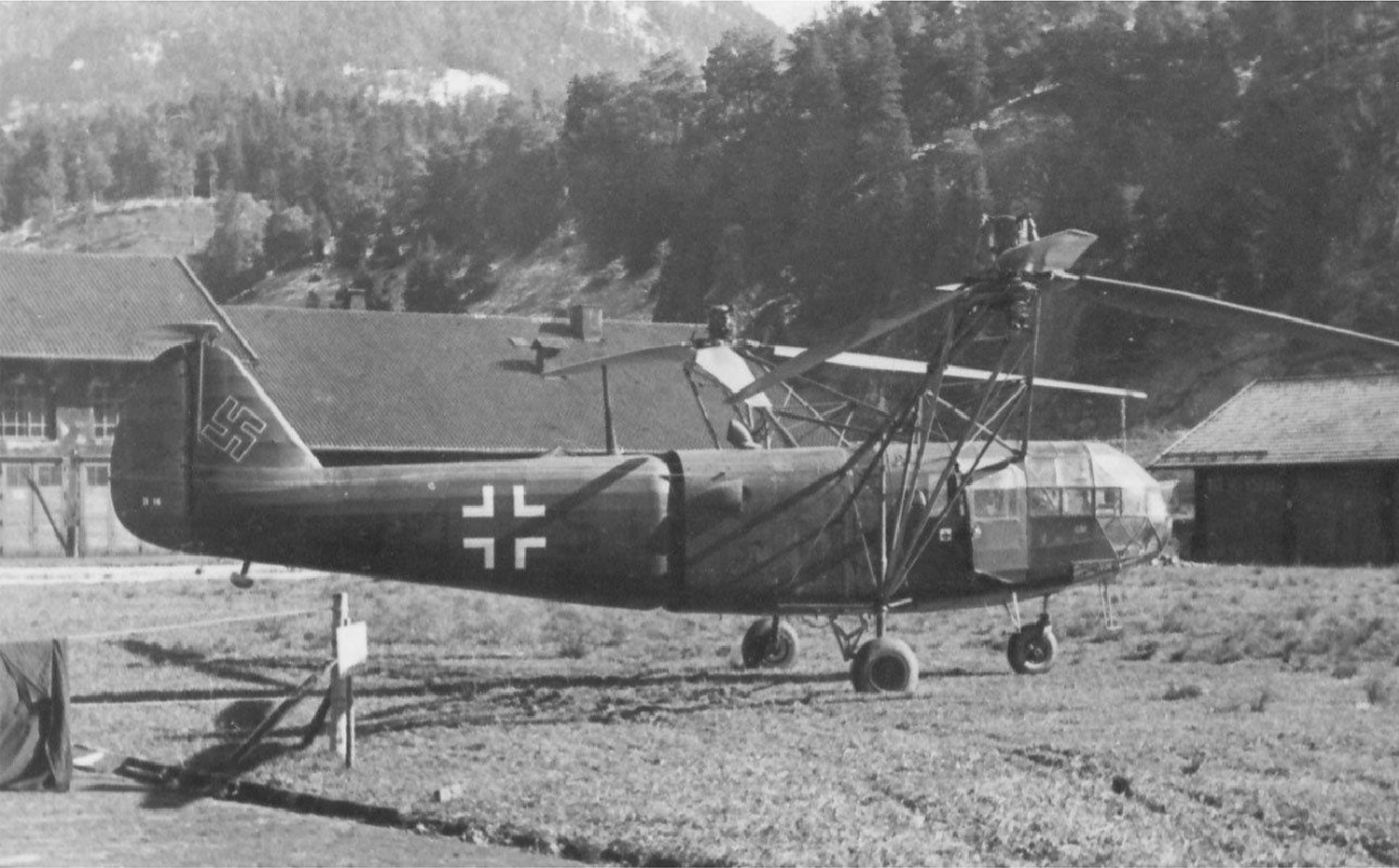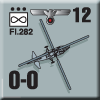| Golden Journal No. 48:
Black Helicopters
Scenario Preview
by Mike Bennighof, Ph.D.
September 2022
I designed Panzer Grenadier: Black Helicopters to make use of some pieces we already had in storage, German helicopters that for the most part did actually see service, just not a while lot of it. Black Helicopters is a Golden Journal, an exclusive for Gold Club members, and I feel a little more freedom in designing things for the Journal that I might not for items available to the general public.
After designing a set of conventional scenarios for Black Helicopters, I decided to scrap them and start over. They were fine scenarios, and probably would have garnered no pushback at all – but also not nearly enough fun. The Golden Journal is supposed to be extra-fun, and more than a little odd. So instead of tracing the attack of heliborne troops on Crete in May 1941, we move the date back by a month and the helicopters help the Germans invade the Soviet Union, where they fight against Soviet river monitors from River Battleships.
Helicopters make games more fun, and so do river monitors. And it’s just too good to pass up, to have them both together. So let’s look at the scenario set from Black Helicopters:

The Situation
While the early German helicopter prototypes showed promise by the summer of 1940, development proceeded only slowly as resources went to more pressing needs. Not until late in the war would the Fl.282 recon helicopter and Fa.223 transport enter service, and then only in small numbers.
In our helo-centric alternative history, development moves directly from prototype to intensive testing to serial production by the spring of 1941, with just enough machines complete by June 1941 to equip part of the 22nd Air-Landing Division with them. The division, part of Army Group South, details its air-capable battle group to assist the 49th Mountain Corps in its advance across Ukraine.
The 22nd Air-Landing Division was trained and equipped for rapid transport by aircraft – it was not an airborne division, nor (despite the claims of Wikipedia, copied endlessly across the interwebs) did it deploy its troops by glider. Instead, it would fly its troops into captured airfields by Ju52 transport and spread out from there.
In our story, the air-transportable division is deemed suitable for helicopter transport as well. The weapons, equipment and training to quickly board and disembark from transport planes translates easily to the Fa.223 helicopter. A battalion of attack helicopters – Fl.282 and Fa.223 machines armed with machine guns, cannon and rockets – is added to the division. The dividual artillery regiment also acquires a squadron of observation helicopters, Fl.282 machines.
By early June 1941, there aren’t enough helicopters to completely equip the division, which instead forms a helicopter-capable battle group for Operation Barbarossa. And that’s where out story begins.
Design Note: In the actual Operation Barbarossa, 22nd Air-Landing Division (without any helicopters), participated as a regular infantry division as part of the German 11th Army deployed in Romania.
Scenario One
Roadblock
June 1941
 Vertical envelopment, added to combined-arms blitzkrieg tactics, would allow the German advance into the Soviet Union to gather even greater speed. Arriving at the front after the initial advances, the helicopter-mobile troops had an immediate impact on 49th Mountain Corps’ advance east of Terebovlya. Their appearance only added to Soviet confusion, but local commanders still managed to react quickly when the weird machines appeared. Vertical envelopment, added to combined-arms blitzkrieg tactics, would allow the German advance into the Soviet Union to gather even greater speed. Arriving at the front after the initial advances, the helicopter-mobile troops had an immediate impact on 49th Mountain Corps’ advance east of Terebovlya. Their appearance only added to Soviet confusion, but local commanders still managed to react quickly when the weird machines appeared.
Conclusion
Defending the third dimension would have been a difficult task for any army of 1941, let along one that had just undergone the brutal shock of Operation Barbarossa’s opening assault. The fortified region troops had been rolled out of their positions, first along the new border with German-occupied Poland, then in the Stalin Line along the pre-1940 border. They still possessed plentiful machine guns, and more anti-aircraft guns than a rifle division. It wouldn’t be enough.
Notes
We lead off with a more conventional scenario, an insert of air-landing troops to assist the advance of a German mountain division. The defenders are from a fortified zone rather than a line unit, so they’re not as mobile (not like that matters against an heliborne enemy) but they do have many more automatic weapons, which are kryptonite to these early choppers.
Scenario Two
Breakthrough
July 1941
 The Red Army’s anti-tank brigades represented potent blocking forces capable of stopping even a panzer division in its tracks, as 9th Anti-Tank Brigade did outside Raseiniai. First Anti-Tank Brigade had some success as well, but was doomed by lack of transport and fuel to move its heavy guns to new positions ahead of the Germans. Given those vital resources, the powerful brigade could become a roadblock only helicopters might remove. The Red Army’s anti-tank brigades represented potent blocking forces capable of stopping even a panzer division in its tracks, as 9th Anti-Tank Brigade did outside Raseiniai. First Anti-Tank Brigade had some success as well, but was doomed by lack of transport and fuel to move its heavy guns to new positions ahead of the Germans. Given those vital resources, the powerful brigade could become a roadblock only helicopters might remove.
Conclusion
The Red Army’s anti-tank brigades also included anti-aircraft defenses, but these couldn’t stop the helicopters form inserting enemy infantry behind their positions. Those that came too close to the Soviet batteries paid heavily – the helicopters of 1941 were even more fragile than those of a generation or two later. But it was enough to keep the German advance rolling forward.
Notes
There’s a panzer division held up by a strong force of heavy (76.2mm) anti-tank guns, but the helicopters are on their way to save the day. Except that the anti-tank brigade also includes an anti-aircraft battalion . . .
Scenario Three
Air-Water Battle
July 1941
 Unseasonably rainy weather grounded the German Air Force as Army Group South reached the wide barrier of the Dnepr River. The invaders now had to reckon not only with the river itself and the Soviet troops waiting on the other ride, but the river monitors steaming up and down it with impunity under the gray skies. But a little rain won’t stop a helicopter. Unseasonably rainy weather grounded the German Air Force as Army Group South reached the wide barrier of the Dnepr River. The invaders now had to reckon not only with the river itself and the Soviet troops waiting on the other ride, but the river monitors steaming up and down it with impunity under the gray skies. But a little rain won’t stop a helicopter.
Conclusion
The Soviets had built their river monitors (or in the case of these formerly Polish monitors, re-fitted them) with the expectation that they would face an unfriendly air environment, even if they had not anticipated the German deployment of helicopters – machines well-known in the pre-war Soviet Union. The river monitors had the ability to shoot back at the helicopters, but lacked their mobility and despite heavy losses among the flying machines, the river would be cleared of enemy warships to allow an assault crossing.
Notes
Now we get to the river battles, with a straight-up fight between helicopters (armed with cannons and rockets) and river monitors.
Scenario Four
Air-Landing Division
July 1941
 Faced with well-prepared Soviet defenses along the Dnepr River, the German Army Group South had an answer: the helicopter-equipped 22nd Air-Landing Division. The division’s helicopter regiment could lift assault troops over the broad river with little difficulty, and also help suppress Soviet defenses along the riverbank and on the water itself, to allow more troops and vehicles to cross the old-fashioned way. Faced with well-prepared Soviet defenses along the Dnepr River, the German Army Group South had an answer: the helicopter-equipped 22nd Air-Landing Division. The division’s helicopter regiment could lift assault troops over the broad river with little difficulty, and also help suppress Soviet defenses along the riverbank and on the water itself, to allow more troops and vehicles to cross the old-fashioned way.
Conclusion
The Soviets had started to learn the danger of vertical envelopment, and built a defense in depth behind the river line, with reaction forces ready to attack any landing zones. Those tactics increased German losses, but couldn’t stop the heliborne troops from gaining a lodgment on the mighty river’s left bank and clearing the way for reinforcements to make their way across by both helicopter and boat.
Notes
It’s the main event! The Germans are trying to cross a mighty river (the Dnepr) in the face of Soviet Marines, an armored train, a cavalry division and river monitors. The Germans have helicopters.
Scenario Five
Riverine Warfare
July 1941
Lacking the air power available to their German allies farther north, the Royal Romanian Army looked to the monitors of its Danube Flotilla to clear the lower reaches of the river of the enemy’s river fleet. The German 22nd Air Landing Division could lend its attack helicopter battalion to the effort, however.
Conclusion
With their nearly all-weather capability, attack helicopters could have a serious impact on naval operations on the rivers of Ukraine and nearby coastal waters. The combination of helicopters and armored river warships gave the Axis an opportunity to seize control of Ukrainian rivers, but the Soviet flotillas would have something to say about that ambition.
Notes
The helicopters fly on down the river to assist the Romanian river flotilla fighting it out with the Soviets, is a huge riverine free-for-all. This is some real wargaming right here, folks.
Aftermath
The United States sent 11,800 helicopters to Vietnam over a span of nine years (1964-1973) and lost 5,600 of them, a staggering loss rate of 47.5 percent. And those were far more capable machines than those depicted in Black Helicopters, facing an enemy without much in the way of air defenses.
A German helicopter detachment on the battlefields of 1941 would have suffered a horrific rate of attrition, to both enemy fire and mechanical breakdown. This was a new technology in 1941, and the German Army would have had few technicians capable of maintaining the complicated machines. Aircrew replacement would have been an additional problem, on top of providing fresh helicopters to take the place of those lost in action or through simple crashes unaided by the Soviets.
And that’s the Black Helicopters scenario set!
The Golden Journal is only available to the Gold Club (that’s why we call it the Golden Journal).
Click here to join the Gold Club.
See your Gold Club Insider newsletter for ordering information.
Sign up for our newsletter right here. Your info will never be sold or transferred; we'll just use it to update you on new games and new offers.
Mike Bennighof is president of Avalanche Press and holds a doctorate in history from Emory University. A Fulbright Scholar and NASA Journalist in Space finalist, he has published a great many books, games and articles on historical subjects; people are saying that some of them are actually good.
He lives in Birmingham, Alabama with his wife, three children, and new puppy. He misses his lizard-hunting Iron Dog, Leopold.
Want to keep Daily Content free of third-party ads? You can send us some love (and cash) through this link right here.
|
